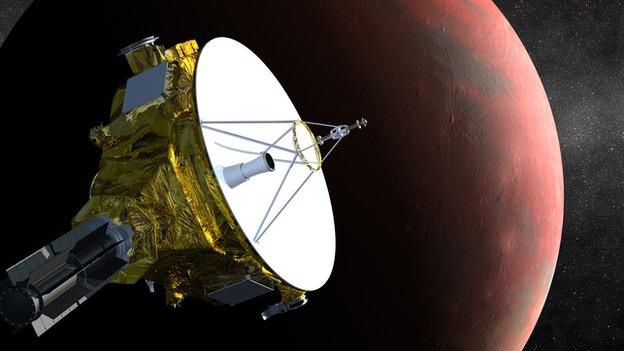New Horizons snaps Pluto from eight million km
- Published

The image combines information gathered from two of the craft's cameras on 7 July
New Horizons has acquired yet another stunning view of Pluto.
The US space agency probe captured the latest image on Tuesday when it was just under eight million km from the dwarf world.
As of Thursday, New Horizons had moved to within six million km, heading for its historic flyby next week.
The new picture was the first to be returned following the computer hiccup at the weekend that saw the probe briefly drop communications with Earth.
The face of Pluto seen in the image is broadly that which will be examined in detail on 14 July.
It includes a large dark region near Pluto's equator, dubbed "the whale", and a roughly heart-shaped bright area spanning 2,000km.
Weird world
At closest approach, New Horizons will be about 12,500km above the surface.
Its high-resolution camera Lorri should then be able to discern features at a resolution better than 100m per pixel.
Lorri is responsible for the view seen on this page, too, but the colour information has been overlaid from the probe's other camera, Ralph.
"They're still a little blurry but they're by far the best pictures we've ever seen of Pluto, and they're only going to get better," said John Spencer from the Southwest Research Institute (SwRI) in Colorado, US, one of the New Horizons co-investigators.

SwRI astronomer and New Horizons team member Alex Parker tweeted this graphic
"Right now they're just showing us that Pluto is really weird. It's got some extremely dark areas, some extremely bright areas, and we don't know what any of them are yet," Dr Spencer told Newshour on the BBC World Service.
He and his colleagues believe the brightest patch might be covered in frozen carbon monoxide, while the dark swathe may be a deposit of hydrocarbons, burnt out of Pluto's atmosphere by UV light and cosmic rays.
But this is all guesswork at the moment.
"We will get pictures 500 times better than this next Tuesday, when we have our closest approach," Dr Spencer said.
When it arrives at the dwarf planet, New Horizons will be travelling at almost 14km/s - far too fast to go into orbit.
Instead, it will execute an automated, pre-planned reconnaissance, grabbing as many pictures and other data as it can as it barrels past the 2,300km-wide dwarf and its five known moons: Charon, Styx, Nix, Kerberos and Hydra.
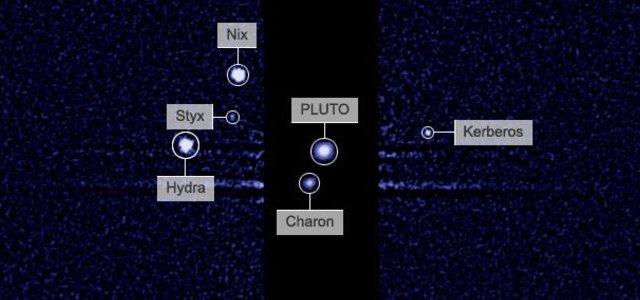
The Pluto system has five known moons
The flyby occurs on the 50th anniversary of the first successful American pass of Mars by the Mariner 4 spacecraft.
By way of comparison, New Horizons will gather 5,000 times as much data at Pluto than Mariner did at the Red Planet.
New Horizons' difficulty is getting all that information back to Earth. The distance to Pluto is vast - more than 4.5 billion km - and this makes for very low bit rates.
It will take 16 months to send back all the science acquired over the coming days.
The BBC will be screening a special Sky At Night programme called Pluto Revealed on Monday 20 July, which will recap all the big moments from the New Horizons flyby.
Jonathan.Amos-INTERNET@bbc.co.uk, external and follow me on Twitter: @BBCAmos, external
- Published9 July 2015

- Published8 July 2015
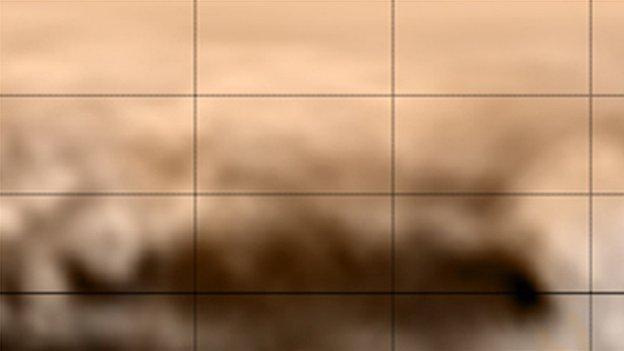
- Published6 July 2015
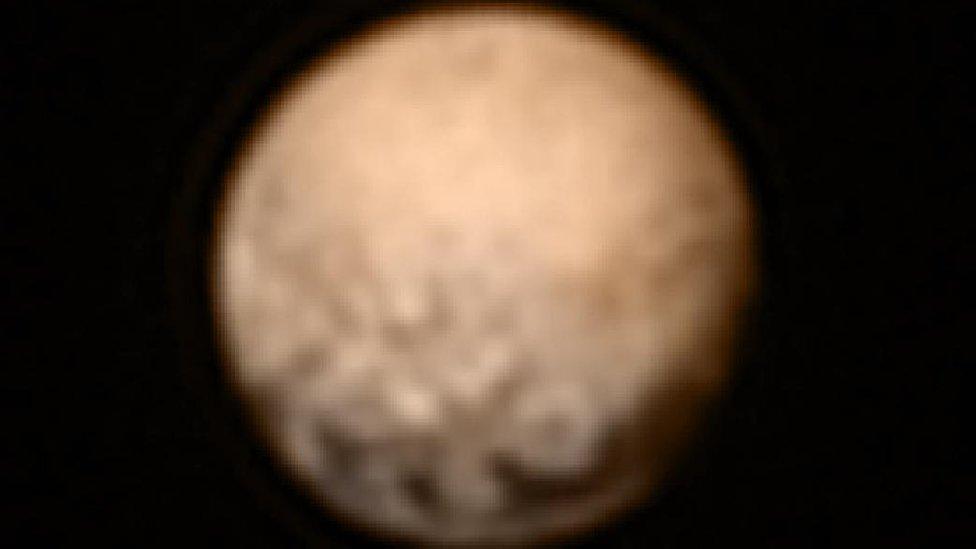
- Published2 July 2015
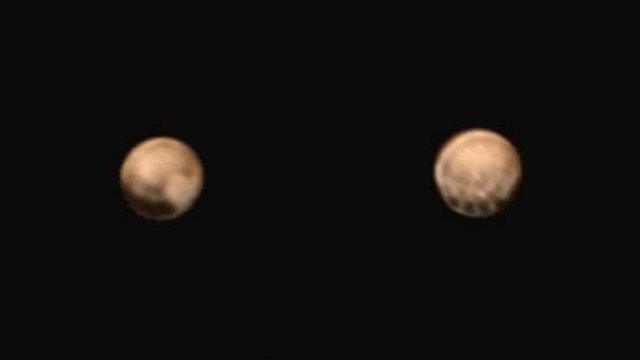
- Published1 July 2015
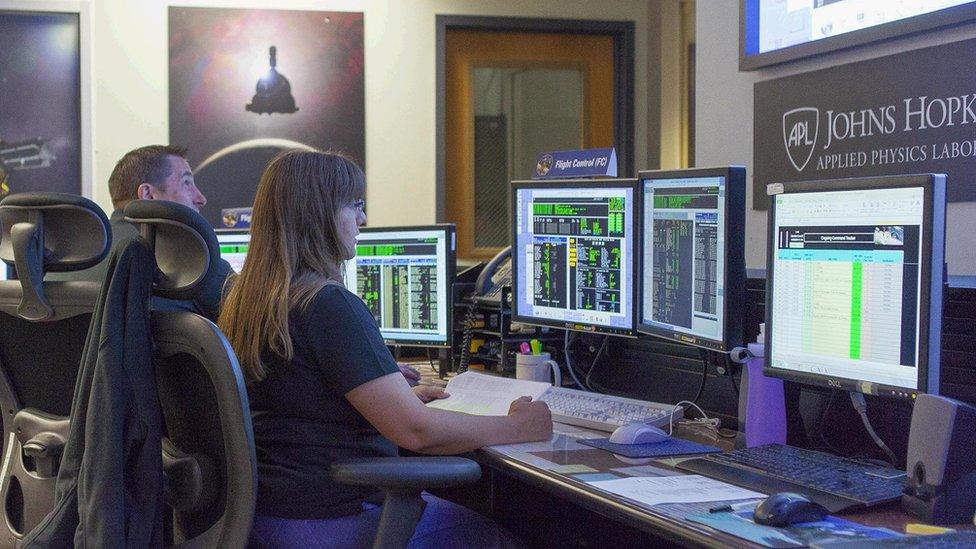
- Published12 June 2015
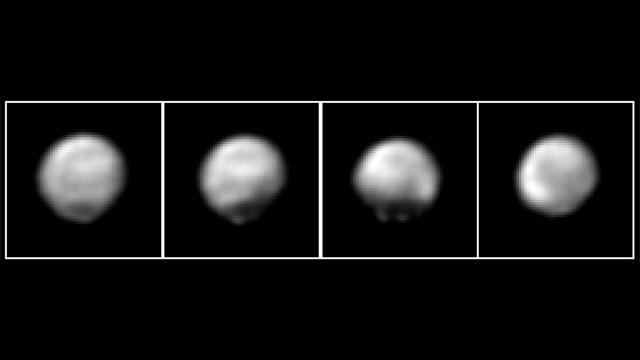
- Published4 June 2015
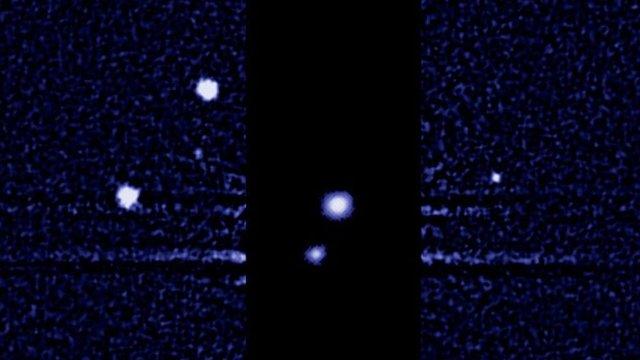
- Published13 May 2015
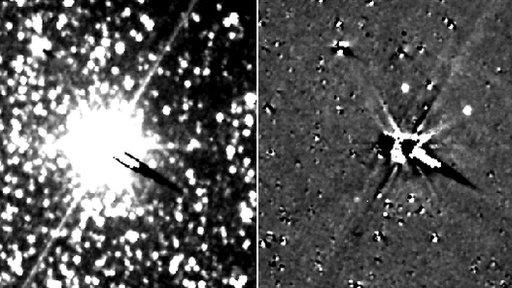
- Published30 April 2015

- Published15 April 2015
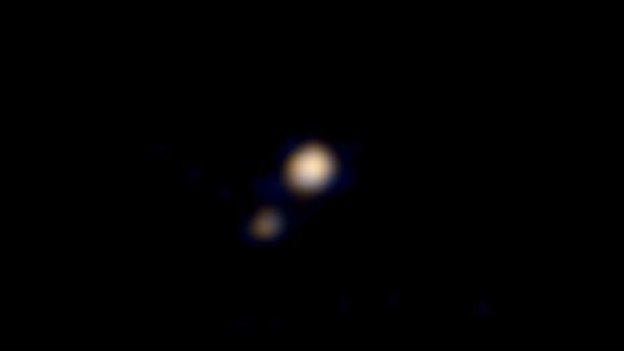
- Published5 February 2015
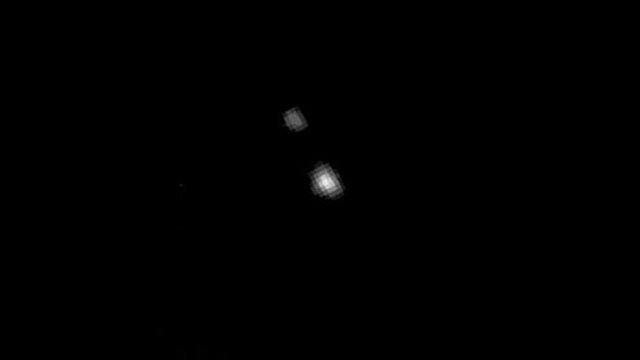
- Published25 January 2015
